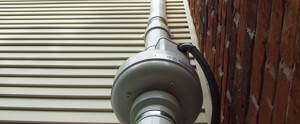St. Louis Radon Testing Considerations
There are outside circumstances that can have an effect on radon measurement. These unique situations can become more of a concern for borderline, time sensitive measurements. If you have questions about your radon measurement, please discuss your test results with a certified professional.
Testing Concerns
- Homes with more than one lower level type should test on each lowest level directly above ground (i.e. basement, & room directly over crawl space & room addition(s) directly on ground)
- Radon will likely be highest in the lowest level, decreasing as much as 50% on subsequent floors
- Radon concentration is highest in areas that are close to, or surrounded by, the ground.
- A vacant home will measure similar to an occupied home, assuming normal temperatures are maintained
- Radon concentration will vary within the home, but not much on the same level
- Room to room measurements in large buildings may vary considerably
- Charcoal testing can sometimes have a bias toward the latter part of the testing period
It is important to remember that Radon continuously fluctuates.
Wind, Rain and other Natural Forces
- Light rain has little effect on radon concentration
- Extended rain can block soil pathways and either raise or reduce indoor radon levels
- Indoor concentrations may be higher during rainy seasons
- Indoor radon concentration may be higher in the winter months, while the heating system is pulling air up and out of the home via natural heat convection, -"the stack effect".
- Frozen ground can cap the homes surrounding soil and elevate radon levels
- Daily radon variation is greater in the summer than the winter
- High winds can either raise or lower radon levels, depending if the wind creates a positive pressure interior or a negative interior pressure.
- Low barometric pressure can force soil gases and radon into a home
- An activated sump pump could pump out radon with the water
- Radon is usually higher at night and lower during the day
Outside of a real estate transaction and where the measurement was taken in a level not regularly occupied, occupants may also consider testing upper levels and/or areas occupied most frequently. This is not to suggest complacency, there is no known safe level of radon and even low levels present some risk.
Homes, outside of a real estate transaction, with moderate to low levels may consider measuring a second time with either a short term or a long term test.
Most short term tests provide the same mitigation decision as a long term test




